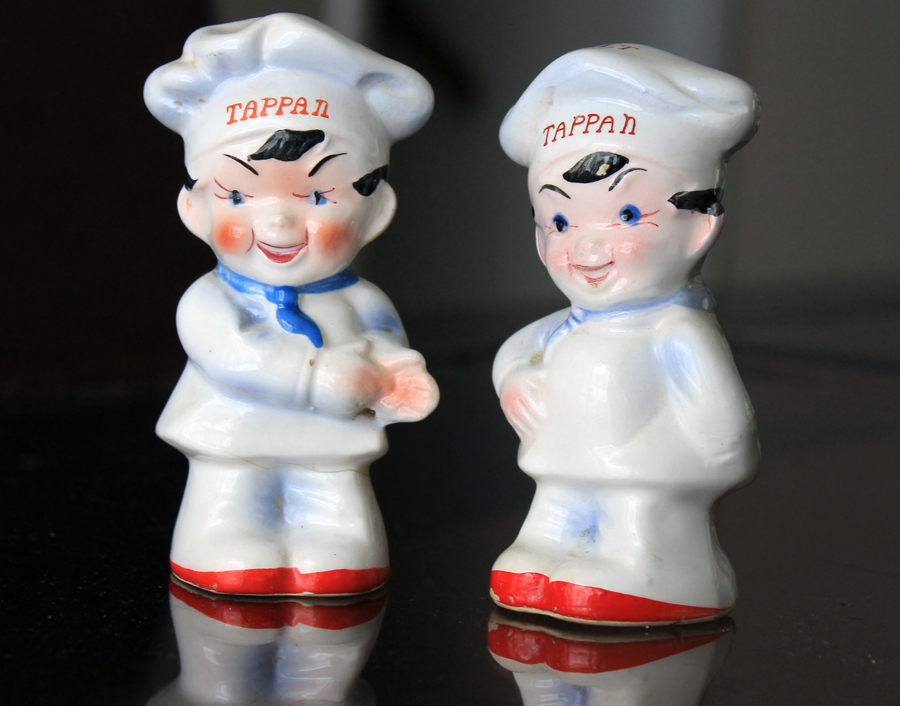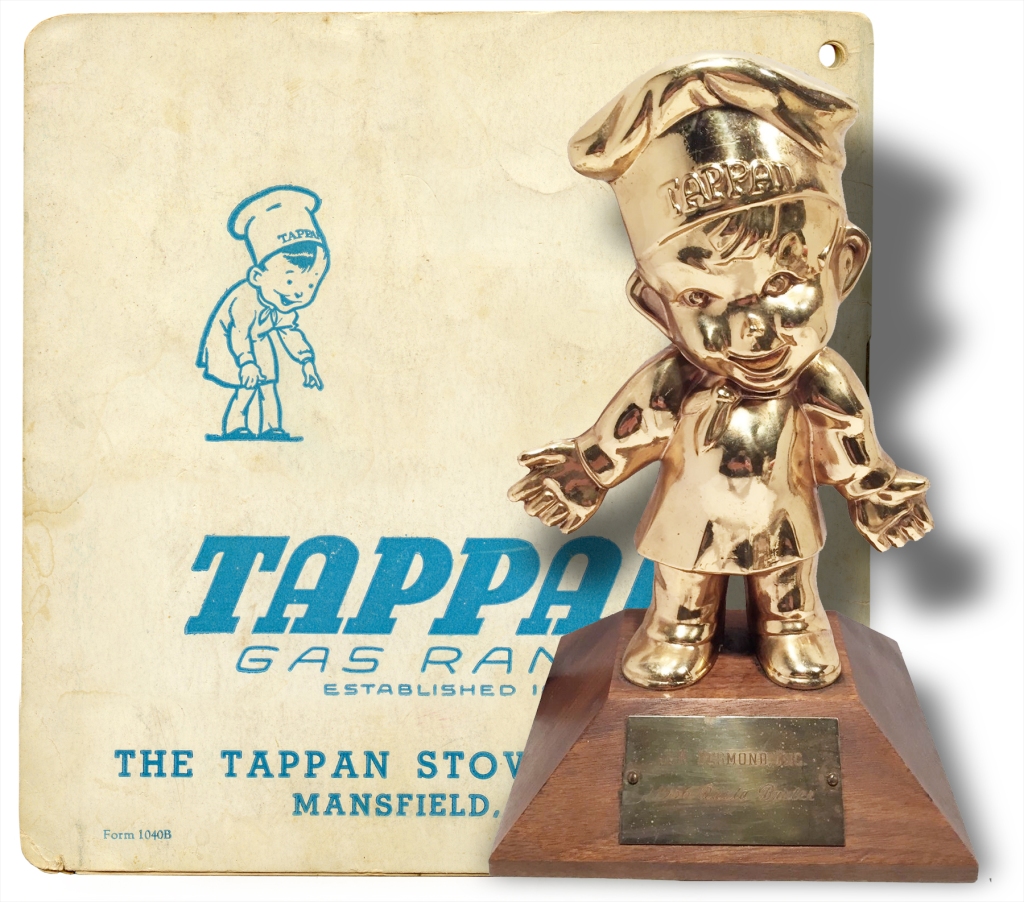
For most of Mansfield’s history, the mainstay of its economic vitality has been industrial manufacturing, and for roughly 100 years of that time—from the 1880s to the 1990s—nearly all of the factories that put our city on the map were located in the Flats. During those years, Mansfield’s industrial district was largely dominated by big-name appliance companies; many of which may or may not be found on the shelves today.
One of the most far-reaching Mansfield-based names—recognized and commonly respected from coast to coast by home designers and housewives—was Tappan.
Generations of Americans through the years knew the name Tappan primarily for stoves: originally wood-burning stoves, then gas ovens and cooking stoves, then electric ranges, and eventually microwave ovens.
People all over the country had Tappan in their kitchens, and when they looked closely—behind the porcelain front panel or on the back with the serial numbers—they saw plainly embossed on their appliance another name: Mansfield, Ohio.
There was a hometown Mansfield-native character who became widely associated with Tappan. In the middle of the 20th century this funny little guy—a cartoon chef—stepped forward into popular culture to represent and advertise Tappan stoves. The public knew him as simply the ‘Tappan Chef,’ or the ‘Little Chef,’ but in-house—in the Tappan offices and assembly lines in the Flats—he was known more familiarly as ‘Tappy.”

Tappy came to life on a drawing board at the Wayne Street advertising department in the early 1930s, and he made his first timid appearances casually in company newsletters. It was the age of Mickey Mouse when movie reel cartoons were wildly popular, so no one in Tappan advertising could doubt the wisdom of getting a cute little cartoon associated with their products.
He was introduced to the public on what is now known as ‘Depression ware’ when Tappan struck a deal with McKee Glass in Jeanette PA to provide every new stove buyer with their own custom Tappan salt & pepper shaker set.
These ‘milk glass, roman arch shakers with Bakelite lids’ are still highly collectable.

Once Tappy had found his niche in the public imagination he started showing up everywhere: on cook books, in department stores, on the walls of appliance shops. During WWII, while the Tappan Stove Company was cranking out cook equipment and airplane parts for the military, Tappy joined the war effort by helping to sell war bonds.


Following the war when the economy was booming, everything popular was new and modern, so Tappan decided to move past the old fashioned 30s Deco look of their salt & pepper shakers. The new Tappy was a little shorter and a little rounder…actually more along the dimensions of Mickey Mouse. They had Tappy sculpted into ceramic forms and came out with a brand new line of cute little free give-away stovetop promos.
This is where the story gets sticky because it was 1950 and these cute little Tappy toys were made in Japan.
The advertising execs at Tappan were sensitive about the implications of having him made in Japan so soon after the Japanese were enemies in WWII, so they went to lengths to have him US-identified: dressing him in red, white & blue. There was just one element of the design they didn’t factor in, however, an element left in the hands of Japanese hand-painted ceramic artists.
When cartons and crates filled with thousands of hand-painted Tappys arrived for US distribution, his cute little chubby face had the unquestionable look of Japanese toys with Asian-stereotyped eyes that were drawn at a tilt.
We might chuckle about it today but in 1950 there were many veterans and widows of the Pacific Theater of WWII who had a not very amused attitude toward Japan, and were rather bitter about all things Japanese. This was pretty much the end of Tappy, as it was difficult to promote national pride of Made in the USA with a little guy who was—to grudging American eyes—obviously not.

Locally the response to Tappy’s ‘made in Japan’ face was much as you might expect: some people laughed, some of them were angry. Some locals started pronouncing the word ‘Tappan’ with the accent on the second syllable, to rhyme with ‘Japan.’
A small complaint was lodged at the Wayne Street factory by some blue collar veterans on the assembly line, and after that the Tappy salt & peppers were never distributed within 50 miles of here again.
If you look for them as antiques offered online today you’ll find they are being sold from states all over the US, but relatively few originate from Ohio.

In Memory:
I was standing on Wayne Street taking pictures of the pile of rubble that is the recently-demolished Tappan plant, when a car pulled up and an old gentleman got out so he could pick up a brick from the factory. He wanted to put it on his father’s grave.
He told me that his father had worked his entire adult life at Tappan, and had been a foreman during the hectic years of WWII. When I asked him about Tappy and the salt & pepper episode his eyes crinkled with that characteristically impish smile Mansfielders get when they talk about local scandals from their childhood. He knew exactly what I was talking about. His answer was his smile and a respectful silence in honor of his father.
That is the earth-healing therapy of history… there is always a new generation to restore the balance of humanity by overlooking and forgetting the wounds of generations passed.

Psychologists posit that this childlike proportion is subconsciously appealing and comforting to human sensibilities…and particularly to American consumers with a checkbook.
Pictured here are a Tappan Range user manual and a Tappan Company sales award.

Tappy is shown here on a necktie (found in a Mansfield thrift store), and a 60s flip-top metal lighter.
Hi!
I’m based in the UK and have just bought a Tappan Fabulous 400 from a small ad.
I know nothing about the brand, they are pretty much unheard of in Great Britain.
Do you have any information about the wonderful model I have bought? How long were they in production? What did they cost? How on earth did one end up in Rickmansworth – 30 miles NW of London?
Thank you for your history lesson – it was really enjoyable and interesting.
LikeLike
Fabulous 400 was the bright new innovative release for 1958. It was very popular and sold well, but by the mid-1960s Tappan was on to their next bright new thing. They were advertised as being very easy to move and install…so somebody moved one right across the Atlantic.
LikeLike